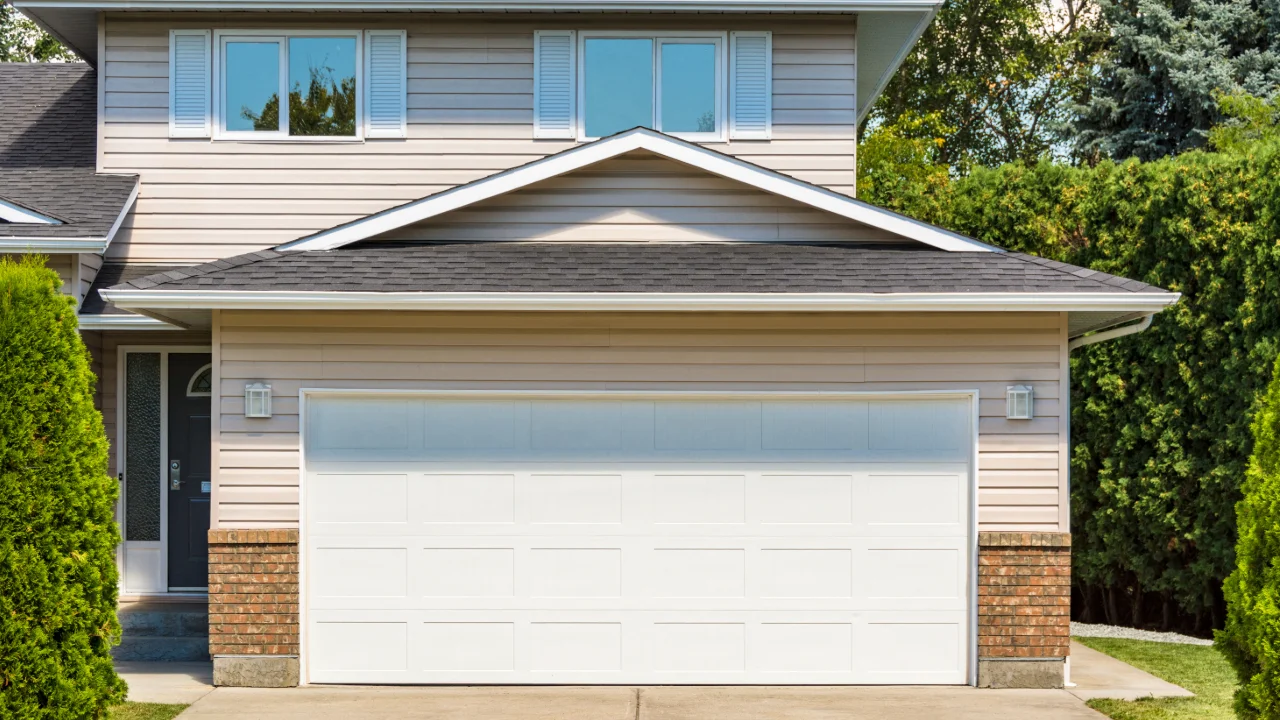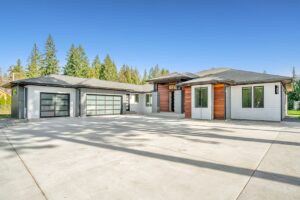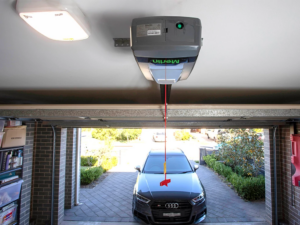A hot garage can be more than just uncomfortable. It can also affect the lifespan of your vehicle and other stored items.
That’s why keeping your garage cool is essential, especially during the summer months. But how can you achieve this?
In this article, we’ll share 10 practical tips to help you maintain a cooler garage. From insulation strategies to regular maintenance, these tips are designed to make your garage a more comfortable space.
So, whether you’re a DIY enthusiast or just looking to improve your home, read on for some effective garage cooling solutions.
Understanding the Importance of a Cool Garage
Keeping your garage cool is not just about comfort. It also protects your possessions from heat damage. Electronics, tools, and chemicals can degrade in extreme temperatures.
Moreover, a cooler garage can improve energy efficiency. It prevents excess heat from seeping into your home, reducing cooling costs. Understanding its impact can motivate you to explore effective garage cooling tips. These benefits make investing time and resources into garage cooling solutions worthwhile.
Tip 1: Insulate Your Garage Walls and Door
Insulation is a key factor in managing garage temperature. Adding insulation helps prevent heat from getting in and out. This creates a more stable and cooler environment inside your garage.
Choose the right materials for your garage’s walls and doors. Fiberglass and foam board are popular options for their effectiveness. They are known for blocking heat and providing soundproofing benefits.
Don’t forget the door! An insulated garage door can make a significant difference. It acts as a barrier, maintaining a consistent indoor climate. This simple upgrade can lead to greater comfort and energy savings.
Tip 2: Use Weather Stripping to Seal Gaps
Weather stripping is essential for sealing gaps in your garage. These gaps allow heat and cold to enter freely, disrupting the garage’s internal climate. By sealing them, you keep unwanted temperature changes at bay.
Select weather stripping materials that match your garage’s needs. Foam, rubber, and vinyl are all good options. They provide a durable seal while being easy to install yourself.
Regular inspections are important to ensure effectiveness. Over time, stripping may wear out or become less effective. Replace it as needed to maintain a consistently cool environment.
Tip 3: Enhance Ventilation with Fans or Vents
Proper ventilation plays a crucial role in keeping your garage cool. Without it, hot air becomes trapped, creating an uncomfortable environment. Introducing fans or vents helps circulate air and dissipate heat.
Ceiling fans are a cost-effective way to boost airflow. They aid in moving cooler air around and can be paired with other cooling methods. Vents, whether passive or powered, are also effective in removing hot air from the garage.
For maximum efficiency, consider the garage’s layout and size when installing fans or vents. Position them strategically to facilitate air movement. This ensures a continuous influx of fresh, cool air into your space.
Tip 4: Install a Reflective Roof or Use Reflective Paint
A reflective roof can significantly reduce your garage’s temperature. It deflects the sun’s rays, preventing heat absorption. This type of roof keeps the inside of your garage cooler throughout the day.
If replacing your roof isn’t feasible, reflective paint is a practical alternative. Reflective paint reflects sunlight, reducing the heat that penetrates your garage. It’s cost-effective and easy to apply to an existing roof.
By reducing the heat flow into your garage, these reflective solutions help lower the temperature. As a bonus, they can also contribute to energy savings for your home.
Tip 5: Consider a Mini-Split Air Conditioner
Installing a mini-split air conditioner in your garage offers a permanent cooling solution. It operates efficiently and cools specific areas, providing targeted comfort. This system works well in garages that serve as living spaces.
The installation is straightforward, with minimal structural changes needed. Mini-splits don’t require ductwork, making them ideal for spaces like garages. They are energy-efficient, contributing to lower utility bills over time.
Aside from cooling, mini-splits provide heating when needed, ensuring year-round comfort. With a mini-split system, you control your garage’s temperature, enhancing usability and comfort in any season.
Tip 6: Shade Your Garage with Trees or Awnings
Using trees or awnings to shade your garage can significantly reduce heat absorption. Strategically placed trees provide natural shade, blocking intense sun rays. Over time, this can help lower the temperature in your garage.
Awnings are another effective option and can be installed directly above garage doors or windows. They come in various materials and styles, allowing you to choose one that matches your home’s look. Awnings prevent direct sunlight from entering, reducing indoor heat.
Both trees and awnings protect against harsh sunlight, contributing to a cooler, more comfortable garage environment. These solutions also enhance your property’s aesthetic appeal.
Tip 7: Use Dehumidifiers to Reduce Moisture
A dehumidifier can be essential for cooling your garage. High humidity levels can make the air feel warmer than it is. By removing excess moisture, a dehumidifier can significantly improve comfort.
Dehumidifiers work by pulling in moist air and expelling drier air. This process not only cools the space but also helps prevent mold and mildew growth. Keeping the air dry can be crucial for a garage used as a workspace or storage area.
Choose a dehumidifier suitable for your garage size for the best results. Place it in a central location to ensure even moisture reduction. Regularly empty the water collection tank, unless the unit has a continuous drain option.
Tip 8: Keep the Garage Clutter-Free for Better Airflow
A cluttered garage can obstruct airflow, making it hotter and more uncomfortable. By organizing and decluttering, you allow air to circulate more freely, leading to a cooler environment.
Take time to sort through stored items and decide what you truly need. Consider investing in shelving units or pegboards to maximize space efficiency. This not only improves airflow but also keeps your garage tidy.
Keeping your garage organized can significantly enhance air circulation. With fewer obstacles, fans and other cooling methods can be more effective, promoting a more pleasant atmosphere.
Tip 9: Upgrade to an Energy-Efficient Garage Door
An energy-efficient garage door can dramatically impact your garage’s temperature. These doors are designed to provide better insulation, reducing heat exchange between the indoors and outdoors.
Consider a garage door with high R-value insulation. This measurement indicates its thermal resistance, with higher values offering better protection against heat transfer. This upgrade can contribute to a much cooler garage environment.
Energy-efficient doors also help lower energy costs by maintaining more stable temperatures. By investing in this solution, you’re enhancing comfort while being kinder to your utility bills.
Tip 10: Regular Maintenance and Professional Garage Door Services
Routine maintenance of your garage door is crucial for keeping the garage cool. Regular checks can identify issues like gaps or worn-out components that let hot air infiltrate your space.
Addressing these issues promptly often requires professional garage door services. Experts can offer comprehensive solutions, ensuring that your garage door functions optimally and remains well-sealed against heat intrusion.
In addition to sealing, professionals can enhance insulation properties. Relying on expert services not only improves your garage’s efficiency but also prolongs the life of your garage door system, keeping it cool for years.
Combining Strategies for Optimal Cooling
Using a single method might not suffice for maintaining a cool garage. Employing a combination of strategies, such as insulation and ventilation, amplifies cooling effects.
Layering approaches like shading, reflective surfaces, and energy-efficient doors can create a more comfortable environment. This multi-faceted approach maximizes effectiveness while balancing cost and effort, ensuring your garage remains a pleasant and usable space year-round.
Conclusion: Staying Cool and Comfortable
Keeping your garage cool enhances both safety and comfort. With the right strategies, you can turn a hot garage into a pleasant space.
By thoughtfully implementing cooling solutions, from insulation to energy-efficient upgrades, you create a better environment for work or leisure. Remember, a combination of these tips ensures maximum cooling efficiency, making your garage a comfortable place to be, regardless of external temperatures.
FAQs About Garage Cooling
How often should I check my cooling systems?
Regular inspections, every few months, help maintain efficiency. Address minor issues before they become major problems.
Can I manage garage cooling on a budget?
Yes, start with simple solutions like insulation, fans, and decluttering. Gradually invest in larger upgrades over time for better results.






